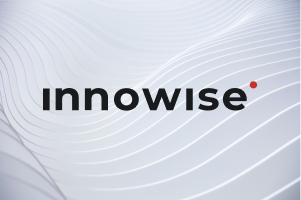Your message has been sent.
We’ll process your request and contact you back as soon as possible.
The form has been successfully submitted.
Please find further information in your mailbox.



Imagine this: you sink weeks (and a fat slice of budget) into an AI initiative, only to discover halfway through that your data is unusable, your model predictions are unreliable, or your solution won’t integrate smoothly with existing workflows. Painful, pricey, and totally frustrating.
Now, picture this going differently: with a razor‑edged AI proof-of-concept. Instead of betting on hunches, you stress‑test every idea up front, smoke out risks, and dodge those wallet‑draining surprises down the line. A PoC is your safety net, proving whether your AI project is genuinely ready for the real world.
In this guide, I’ll walk you through exactly what an AI PoC is, why it’s crucial for managing risk, and how it compares to prototypes or MVPs. You’ll learn the step-by-step approach we use at Innowise, see AI PoC examples, and understand common pitfalls. Let’s dig in!
“Run a PoC to surface the tough stuff early. Data gaps and integration hurdles can trip up even the strongest models, and they’re far cheaper to fix in a small pilot than after a full rollout. Skip that checkpoint and the project might look great on paper, but it will stumble the moment you try to scale.”

Head of Big Data and AI
A proof of concept in AI is a small, laser-focused project that tests if an AI solution solves a specific business problem. Whether you’re validating a classical ML workflow or exploring a gen AI PoC for text or image generation, the idea is the same: test the essentials first. Is the data usable? Do the algorithms hold up? Can it slot into your current systems without blowing them up?
I like to call a PoC your early-warning system. If the fundamentals check out, great, go all in. If not, you pivot before you burn through your bankroll.

Take this example. Our team worked with a manufacturer crippled by random equipment failures. They had mountains of sensor data but weren’t sure how to use it effectively. So, we started with a PoC.
Turned out nearly half the data was mislabeled, an instant showstopper for any AI model. Once we sorted that out, tested a few algorithms (Random Forest, XGBoost) and integrated the best option into their maintenance software. The outcome was a 30% reduction in downtime, showing that the concept worked. That’s when they knew it was time to scale.
Before we get into the nuts and bolts of building an AI PoC, let’s clear up one thing I get asked all the time: what’s the difference between a PoC, a prototype, and an MVP?
People toss these terms around like they’re interchangeable — they’re not. Mix them up, and you risk building the wrong thing for the wrong reason. So here’s a quick, no-fluff breakdown to keep things straight.
| PoC | Prototype | MVP | |
| Main goal | Prove feasibility | Show a rough look & feel | Launch something real that users can try |
| Key question | Does this even work with our data/systems? | Will people understand or want this design? | Is this good enough to ship and refine? |
| What it tests | Core tech + data feasibility | UX flow, layout, user reactions | Real-world usability + early product-market fit |
| Output | Functional code snippet or basic integration | Interactive mock-up or low-fidelity app simulating user flows | Working software application with core features for early users |
| Level of polish | Low — just needs to prove the concept works | Medium — looks decent, might be partly a mock-up | High enough to launch, but don’t expect fancy features |
| Who’s it for | Devs, data scientists, CTOs | Designers, product leads, stakeholders | Real users, early adopters, business teams |
| Time/effort | Shortest, lowest effort | Medium duration and effort | Longer duration and higher effort |
| Risk level | Lowest (focused on a specific technical hurdle) | Medium (risk of usability issues or lack of stakeholder buy-in) | Higher (risk of market rejection or technical scalability issues) |
| Next step | If it works, build a prototype or pilot | Refine based on feedback, move to MVP | Add features, scale, and head toward full rollout |
Look, jumping straight into full-on AI development without testing the waters first is a surefire way to blow your budget. An AI PoC is your low-risk way to figure out if your AI idea actually works before you commit serious time and money.
In my experience, there are certain scenarios when an AI PoC isn’t optional. If any of these sound familiar, it’s time to pump the brakes and run a PoC:
Even the coolest AI idea can hit snags when you try to put it into practice. Data might be cluttered, models can underperform, and integrating with your current systems might be tougher than thought.
For instance, consider an AI tool meant to spot quality issues on a production line. At first glance, it sounds simple, but defects can vary widely from subtle color differences to microscopic cracks. A PoC quickly shows if your cameras capture enough detail, if your labeling is spot-on, and if the model adjusts well to changes in lighting or materials.
Skipping the PoC could mean wasting months and draining your budget on a system that just doesn’t work when deployed. Identifying and mitigating these risks early is key to saving time, money, and avoiding future headaches.
Bypassing a PoC usually sounds faster, until it isn’t. Without one, teams often run straight into unexpected problems halfway through development. And fixing those later? Way more expensive than catching them early.
Let’s say you’re building an AI chatbot to handle customer questions. Sounds simple enough. But your PoC shows something you didn’t plan for: customers are using tons of slang, voice-to-text mistakes, and quirky phrasing. That’s a big hint you’ll need extra NLP fine-tuning. And it’s better to find out before you go live and blow your budget halfway through.
CEOs, investors, and anyone holding the purse strings aren’t going to trust an AI project just because it sounds cool. They want something concrete to bank on. That’s where a PoC becomes your best friend. Real metrics like cutting errors or speeding up processes will hands down beat any glossy pitch deck.
Picture a mid-sized e-commerce shop testing AI-driven product recommendations. A quick PoC might show a 15% jump in average cart value among test users. That kind of hard data speaks volumes and does more to earn support than a dozen strategy slides ever could.
AI doesn’t operate in a vacuum. It touches workflows, teams, and even the way decisions get made. A PoC lets you see how people really interact with new technology and flags the changes needed for a smooth rollout.
For example, maybe you’re implementing AI for delivery route optimization. During the PoC, you find out that warehouse staff override certain AI-generated routes because drivers know certain neighborhoods inside and out. That’s a crucial insight you’d never catch if you went straight to a full-scale implementation.
Your model might shine in a neat little sandbox, but can it handle real-time data feeds, thousands of queries a second, and regulatory hurdles? A PoC pushes your system just enough to pinpoint bottlenecks well before they blindside you in production.
Imagine you’re launching real-time fraud detection for online transactions. A PoC might expose that your data pipeline struggles when updating the model in near-real time or that cross-border purchases set off a rash of false positives. Identifying these pitfalls early is the difference between a resilient AI solution and one that collapses when it’s needed most.
As much as I advocate for AI PoC, I’m not going to pretend it’s always a must. There are cases where spinning up a proof-of-concept is like building scaffolding to change a lightbulb — overengineered and a waste of time.
Here’s when you’re better off skipping the PoC and going straight to action or rethinking whether AI’s even the right tool.
Not every problem calls for machine learning. When a simple rule or script gets the job done, adding AI just makes things slower, more complex, and harder to maintain.
Let’s say you want to send an alert when inventory drops below a certain level. That’s a clear case for a rule-based setup — no need to drag in a neural network.
The point of AI is to solve problems that traditional logic can’t. Unless there’s a real challenge to solve, AI can be more of a distraction than a solution. And if you’re using it just to check the box, that’s a clear sign to rethink your approach.
There are tons of pre-trained AI services available — image recognition, speech-to-text, translation, you name it. Often, it’s cheaper and faster to adopt these battle-proven tools than to build your own from scratch.
For example, if you need an OCR tool to scan receipts and a third-party solution already nails the accuracy, why spend weeks on a custom prototype? I think when a proven option is already on the market, there’s no point in reinventing the wheel. Better reserve your energy for challenges that truly demand a custom solution.
Sometimes teams get hyped about AI before they’ve pinned down the actual problem they’re trying to tackle. When there’s no clear value on the table, an AI PoC can quickly spiral into a massive time and budget sink.
Imagine your team wants to build an AI chatbot simply because everyone else is doing it. If you can’t articulate how it’ll lower costs or boost customer experience, the only thing a PoC will prove is that you can build a chatbot. At that point, it’s smarter to run a quick feasibility check and figure out the real goals first.
Sometimes you just don’t have room for a full-on PoC cycle. Maybe you need an AI chatbot for a seasonal marketing push, and you’ve got two months tops. By the time you’d finish a PoC, the season would be over and done.
In situations like that, it’s wiser to throw together a lean prototype, get immediate feedback, and refine on the fly. Sure, a deep-dive PoC is ideal for big or complex projects, but if you’re up against the clock, an agile test-and-iterate approach can be your best bet.
If you’re working on an AI solution that’s been battle-tested in your industry, a PoC might just slow things down. There’s no need to revalidate what everyone already knows works.
For example, consider AI-powered spam detection for an email platform. There’s plenty of data, the patterns are well-understood, and off-the-shelf models do a solid job. Unless you’re tackling something truly unusual, like spotting hidden links or analyzing embedded images, a PoC won’t offer insights you don’t already have.
Everyone’s eager to turn raw data into insights, automate decisions, and beat out the competition. I get it. But ditching the proof-of-concept to move faster usually backfires and ends up costing way more down the line.
In this section, I’ll walk you through some common pitfalls I’ve seen when teams skip the PoC and why taking that small step early can make or break your AI project.
From my experience, an AI model is only as strong as the data behind it. Yet many PoCs launch with datasets that are too small, unclean, or barely relevant, driving up costs and dragging out timelines.
Even “good” data can flop if it doesn’t reflect real-world conditions. For instance, using generic video clips instead of factual factory CCTV footage might score big in a lab but crash and burn in actual production. In short, if your data isn’t both high-quality and truly representative of your environment, all the promise in your PoC won’t translate into operational success.
Often, there’s this false perception that because a PoC is just a test or a prototype, everything should be done quickly. But in reality, expecting to build a high-performing AI model in a super-short timeframe can be a serious pitfall. Unlike traditional software development, AI work requires several iterative steps — data collection, cleaning, model training, and extensive validation. Rushing through these processes usually leads to a model that isn’t robust enough for real-world applications.
Moreover, what seems like a straightforward prototype on paper often hides a lot of technical complexity. Accelerated schedules might deliver a superficial proof, but without the rigor needed to evolve it into a production-ready system, you’ll end up with unresolved challenges in integration and long-term maintenance.
Without crisp, measurable goals, it’s tough to know whether your PoC is truly working or just looks good in a demo. I suggest defining metrics like precision, recall, error rate, or ROI thresholds up front so performance ties directly to business value.
And if engineers and stakeholders aren’t aligned on what success means, you risk building something that meets the spec but misses the mark operationally. Keep KPIs, operational impact, and decision-maker expectations in sync from day one to avoid a model that shines on paper yet flops in production.
One of the most common mistakes I see is treating an AI PoC like a quick coding sprint. But AI isn’t about writing some code and calling it a day. You’re dealing with messy data, model tweaks, and real-world validation.
Imagine giving your team three weeks to prove an AI model can predict equipment failures. On paper, that might seem doable. But when you start digging, you find data gaps, realize features need overhauling, and discover you need multiple tuning rounds for even basic accuracy. If you rush all that, you’ll end up with a demo that looks good in a vacuum but falls apart in production.
Even basic AI tasks often hide more complexity than expected. They can quickly balloon into months of handling edge cases, refining data pipelines, and prepping for integration. If your timeline is too tight or your scope is too broad, the PoC won’t show you whether your AI works. You’ll only learn how many corners you had to cut to hit the deadline.
A PoC might run perfectly in a controlled environment, but once you plug it into real systems with real-time data and actual users, everything gets harder.
For example, maybe you have a PoC for detecting equipment failures in a single factory. It works perfectly in the lab. But the moment you roll it out to multiple locations, you discover each site uses different sensors, has different data formats, or depends on unique hardware setups. Suddenly, your PoC is stumbling over issues it never faced in testing.
That’s just integration. Now add scale: your PoC handled 10,000 records in testing, but real operations throw millions at it every day. Without solid data pipelines, a modular design, and cloud readiness, your promising PoC can grind to a halt.
In other words, if integration and scalability aren’t on your radar from day one, you’re just delaying the moment when these issues blow up into full-blown crises.
AI isn’t something a solo full-stack developer can just wing over the weekend. You need data scientists, ML engineers, and domain experts all pulling in the same direction.
Let’s say you drop an NLP project on a great Java team with zero experience in training or tuning models. What will you get? Delayed sprints, a pile of tech debt, and a demo that never leaves the playground.
If the right skill sets aren’t on board from day one or at least ready to jump in when needed, you’re signing up for roadblocks, rework, and a PoC that goes nowhere fast.
A proof of concept might feel low‑stakes, but security, compliance, and realistic expectations still matter. Use real user records in an AI PoC without anonymizing them, and you could violate privacy laws before you even start.
Overpromising is just as risky. Pitch the PoC as almost production‑ready, and if the model buckles under real‑world pressure, you torch stakeholder trust. Skipping compliance checks or inflating results might get things moving faster, but the blowback — legal trouble, reputational hits, stalled rollouts — costs far more.
Handle sensitive data correctly, keep your claims grounded, and log the risks from day one. That’s how you avoid painful surprises later.
One minute you’ve got a flashy demo — maybe it predicts stuff, maybe it automates a few clicks — and everyone’s losing their minds. Fast forward a few weeks, the model’s flaky, results are all over the place, and that shiny PoC is collecting dust in some forgotten Slack thread.
It’s an all-too-familiar story. At Innowise, we do things differently. Our team treats every AI PoC like a real product from day one — not a toy, not a throwaway experiment. Real goals. Real validation loops. Real strategy for what comes after the demo hype fades.
Here’s what our actual PoS development process looks like.
The first thing we ask any client is, “What’s the actual problem we’re here to solve?” We’re not here to do AI for AI’s sake. Maybe you want to automate 30% of your support workload. Maybe you want to catch manufacturing defects before they blow up your budget. Either way, if you can’t point to a clear target, you’re just throwing tech at the wall and hoping something sticks.
And here’s the other non-negotiable: get everyone to the table early. Not just IT. We’re talking business leads, ops teams, support staff, data folks — anyone feeling the pain every day. I’ve seen brilliant models go unused because the people who actually needed them weren’t in the loop. Don’t be that project.
Quality AI always comes down to quality data. If your data’s scattered, outdated, or full of holes, no fancy model is going to save it. We kick things off by taking a hard look at what you already have — think transactional logs, user behavior, sensor feeds — and cleaning it up with tools like Pandas or NumPy.
If your data’s incomplete, we’ll look at ways to fill in the gaps. Sometimes, that means generating synthetic records with tools like DataSynthesizer or Synthpop, especially when dealing with sensitive info or rare events.
For example, we once worked with a global shipping company sitting on terabytes of tracking data. On paper, it looked stellar until our team dug in. Over 30% of the records were missing timestamps, and some sensor readings were completely off due to calibration issues. Had we jumped straight into modeling, the PoC would’ve crashed for all the wrong reasons. Instead, we cleaned up data, filled in the blanks, and then moved on to modeling.
The lesson? Don’t build your AI on quicksand. Get that data foundation rock-solid first.
Here, our goal is to choose the right tool for your innovative proof-of-concept projects. If a simple scikit-learn model gets the job done faster and cheaper, that’s our call. We’ve built robust image recognition systems using YOLO or Detectron2, yet our experts have also steered clients toward classic ML when it hits the business objectives without the extra baggage.
For infrastructure, it all depends on what fits best with your setup. Our team might go with Amazon SageMaker, Google Cloud’s AI Platform, or Azure Machine Learning. And if you need to scale big time, Docker and Kubernetes are our go-to choices.
Nothing kills a PoC faster than over-engineering. I’ve watched teams sink months into building some bloated, perfect model, only to discover it solves the wrong problem or nobody even needs it.
That’s why our team goes minimal right out of the gate. No bells, no whistles, no massive infrastructure. Just the bare-bones model that answers one question: Does this idea actually work? Usually, that first version lives in a Jupyter Notebook or Google Colab. Quick to set up, easy to experiment with, and perfect for getting early results without any heavy lifting. If we’re racing against time for a quick demo, we’ll grab a low-code tool like Azure ML Studio. Sometimes, that’s the smartest way to put a working PoC in front of decision-makers without burning a ton of dev hours.
I’ve built entire PoCs like this: tiny, scrappy, laser-focused. And if that base model bumps accuracy by 15% or knocks out 20% of manual tasks, that’s our green light to scale. The rest can come later.
Once the base model looks promising, our team really puts it through the wringer. Train, test, tweak, repeat over and over, until we either see stable results or hit a wall. That’s where things like cross-validation and hyperparameter tuning come in (GridSearchCV, Keras Tuner, Optuna).
And when it comes to validation, we don’t just eyeball it and hope for the best. Our experts go deep into metrics that actually tell us how well (or badly) the model’s doing — confusion matrices and ROC curves for classification, MSE and R-squared for regression.
Also, we log everything in MLflow: every experiment, every parameter, and every version. So if someone asks why version 17 outperformed version 20, we can pinpoint exactly what changed.
From day one, we think about how your AI model will work in the real world. Maybe it needs to send data to your CRM, pull info from your ERP, or trigger actions in your existing platform. Whatever the case, our team plans for it early.
For integration, our specialists usually spin up a RESTful API (Flask or FastAPI) so other systems can easily connect to the model. Then, we package everything in Docker to keep it stable and easy to deploy anywhere.
For scalability, we bring in Kubernetes to manage and scale everything automatically. Kafka rangles real-time data pipelines. And suppose your traffic is unpredictable (hello, holiday sales or product launches). In that case, we’ll use serverless tools like AWS Lambda or Google Cloud Functions so your system can handle sudden spikes without breaking a sweat.
AI projects fall apart fast when only the dev team knows what’s going on. That’s why our team makes sure everyone — business leads, ops teams, and non-tech folks — can follow the story. Sure, the code sits in GitHub, but we also maintain easy-to-digest briefs in Confluence or Markdown. No jargon, no guessing.
And we don’t vanish into a coder cave. Our experts share interim results, quick demos, Slack updates, and sand hort check-ins, so everyone sees progress and chimes in early.
When all’s said and done, it boils down to results. Our team lays out the metrics in dashboards or reports, highlighting what rocked and what needs work.
If it’s a win, we chat about the next steps — maybe spinning up a pilot or a full production rollout. If the PoC doesn’t hit the mark, our experts figure out why. Sometimes, that means tweaking data pipelines, swapping algorithms, or rethinking our approach. And sometimes we realize the idea just isn’t viable, and that’s totally fine. Failing fast with actual insights beats wasting months on a dead end.
An AI PoC gives you a fast, low-risk way to test if your idea actually works before going all-in. But to get real value out of it, you need a partner who knows the ropes. And that’s where we come in. Here’s what you get when you team up with Innowise:
From messy datasets to polished insights, our data engineers, ML pros, and domain experts handle the whole pipeline. No gaps, no guesswork.
With 1,300+ projects under our belt across healthcare, finance, and manufacturing, we know how to turn AI ideas into results that move the needle.
We lock down your data and check every compliance box — GDPR, HIPAA, PCI DSS, PSD2 — the whole alphabet, from day one. So, PoC glides past auditors instead of hitting red tape.
Our specialists set razor‑sharp KPIs and keep communication wide open — so everyone knows exactly where the PoC stands and what’s coming next.
Our experts bake scalability into every build. When your PoC crushes the tests, it slides straight into production and keeps flexing as your goals get bigger.
Our team doesn’t work with sanitized datasets or unrealistic scenarios. We tackle messy inputs, tough edge cases, and the kind of constraints your business actually faces.
From what I’ve seen, a solid AI PoC — whether it’s a classic predictive model, a computer‑vision pipeline, or even a generative AI PoC — can save you a lot of time, money, and stress down the line. It gives you a clear look at what’s actually working, where the gaps are, and whether your idea can hold up outside a test environment. You don’t want to find out your model breaks under pressure after you’ve already committed serious resources.
So, before diving into full development, I’d suggest running a small, focused PoC using real business data. It turns guesswork into hard evidence and gives you the confidence to either double down or walk away, no regrets.

Head of Digital Transformation, CIO
With over 8 years of experience in digital transformation, Maksim turns complex tech challenges into tangible business wins. He has a real passion for aligning IT strategies with big-picture goals, guaranteeing hassle-free digital adoption and elite operational performance.












Your message has been sent.
We’ll process your request and contact you back as soon as possible.

By signing up you agree to our Privacy Policy, including the use of cookies and transfer of your personal information.